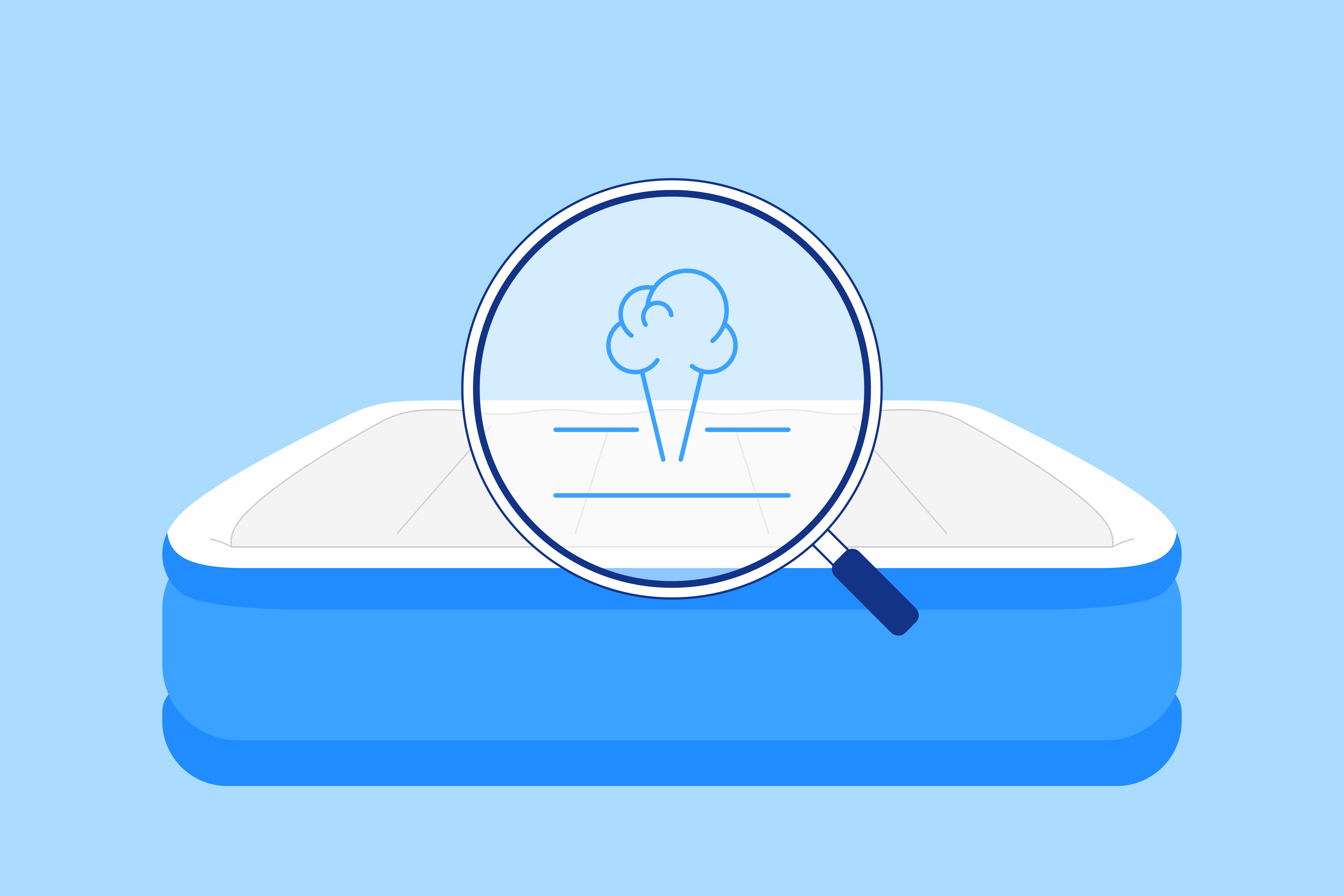Key Takeaways
- Repairing Your Mattress: Before considering expensive replacements, explore mattress repair options. Securing torn edges and using DIY methods like iron-on patches or sewing with upholstery needle and thread can effectively restore your mattress, saving you money and ensuring continued comfort.
- Professional Solutions: For major tears or extensive damage, professional solutions offer long-lasting results. Consider consulting upholstery services for repair or evaluating if replacing the mattress is a more cost-effective option, especially if it’s old and has multiple issues.
- Preventive Measures: Investing in a mattress protector can prevent future damage, such as spills, stains, and tears. Additionally, understanding your mattress warranty coverage and promptly filing a claim, if applicable, can help cover repair costs for eligible damages.
Has your beloved mattress endured wear and tear, leaving you with a disappointing sight of ripped fabric and torn edges? Before you start considering expensive replacements, it’s essential to know that mattress repair is possible.
In this article, we will guide you through simple yet effective methods to fix a ripped old mattress, saving you money and ensuring a good night’s sleep. Whether it’s a small tear or a larger damaged area, we’ve got you covered. Let’s dive in and learn how to restore your mattress to its former glory.
Secure Torn Edges and Find Necessary Supplies
For minor tears and ripped edges, it’s important to properly secure them to prevent further unraveling. Depending on the fabric type, you may need to use a curved upholstery needle and upholstery thread to sew the torn edges together. You may also be able to use an iron-on patch for a mattress cover fabric.
Meanwhile, if you’re trying to find and repair a hole in an air mattress, you may want a marker to circle the hole and a stick-on patch. Often, these patches come complementary with an air mattress, or you may be able to buy one.
If you’re uncertain about the right supplies or techniques to use, consult with experts at your local fabric store or hardware store who can provide guidance and recommend the appropriate materials for repairing your specific mattress type.
DIY Methods for Fixing a Ripped Mattress
Whether you have small tears or larger ones, these DIY techniques can help you restore your mattress’s comfort and extend its lifespan.
Using an Iron-on Patch
If you have small tears in your mattress fabric, an iron-on patch can be an effective solution. Start by cleaning the torn area and removing any loose threads. Then, using an iron set to the appropriate temperature, apply the patch over the tear.
Make sure to follow the manufacturer’s instructions for best results. The adhesive on the patch will bond with the fabric, providing a durable and inconspicuous repair.
Sewing with a Curved Upholstery Needle and Upholstery Thread
For larger tears or those in areas that experience more stress, such as the edges or seams, sewing with a curved upholstery needle and upholstery thread may be necessary.
Thread the needle with the upholstery thread, and using a strong and steady hand, sew a series of stitches along the torn edges. Remember to include a knot at the beginning and end to secure the thread.
This method requires some skill and patience, so take your time to ensure a neat and durable repair.
Using Duct Tape as a Temporary Fix
If you’re in a pinch and need a temporary fix for a ripped mattress, duct tape can come to the rescue. Clean the torn area, remove any loose threads, and cut a piece of duct tape slightly larger than the tear. Carefully apply the tape over the torn section, smoothing out any wrinkles or bubbles.
Although this method is not a long-term solution, it can provide a quick fix until you have the time and resources for a proper repair. It’s best if you need to patch a leaking air mattress swiftly to use it.
However, using duct tape as a temporary fix for a ripped mattress may come with drawbacks. One common issue is the lingering sticky residue left behind once the tape is removed. This residue can be difficult to clean and may attract dust and debris, potentially compromising the hygiene of your sleeping environment.
While duct tape can serve as a temporary solution, it’s advisable to seek a more permanent repair method as soon as possible to avoid these issues.
Professional Solutions for Fixing a Ripped Mattress
When it comes to fixing a ripped mattress, professional solutions can offer long-lasting results and ensure the continued comfort and durability of your bed.
If you’re dealing with a major tear that cannot be easily fixed, you may consider repairing the damage or even replacing the mattress. Depending on the severity of the tear and the condition of your mattress, you may be able to consult a professional upholstery service to repair the tear and restore the integrity of the mattress.
Alternatively, if your mattress is old and has multiple issues, it might be more cost-effective and beneficial to invest in a new mattress altogether.
Preventing Rips with a Mattress Protector
One of the most effective ways to prevent further damage to your mattress is by using a mattress protector. This protective cover acts as a barrier against spills, stains, and tears, shielding your mattress from everyday wear and tear.
Investing in a high-quality mattress protector is a proactive step towards preserving the lifespan of your bed. Aside from preventing rips in your mattress, it can save you from having to consult one of our mattress clean-up guides:
- How to Remove Blood Stains on Your Mattress
- How to Remove Urine Stains and Smell From a Mattress
- How to Get Poop Stains out of a Mattress
- How to Remove Makeup Stains from Mattresses
- How to Remove Coffee Stains from Your Mattress
- How to Clean Vomit from a Mattress
- How to Get Sweat Stains Out of a Mattress
- How to Remove Ink Stains from a Mattress
- How to Get Lint Balls off a Mattress
- How to Clean a Dusty Mattress
- How to Remove Rust Stains on a Mattress
- How to Spot and Clean Mold on Mattress
- How to Dry a Wet Mattress After Water Damage
Ripped Mattress Covers and Fiberglass Exposure Risk
In some mattress models, particularly those with a memory foam or polyurethane foam core, manufacturers may use fiberglass as a fire barrier layer beneath the outer cover. While this material is generally safe when the mattress cover is intact, a ripped or torn cover can lead to potential fiberglass exposure, which can cause health concerns.
Understanding the Role of Fiberglass in Mattresses
Fiberglass is a common material used in mattresses to meet federal flammability standards without the use of harmful chemicals. It is often found in the form of a thin, batting-like layer directly beneath the outer cover of the mattress.
When the mattress cover is in good condition, the fiberglass layer is fully encased and does not pose a risk to sleepers. However, if the cover becomes ripped or torn, the fiberglass can escape and become airborne, potentially leading to inhalation or skin irritation.
Health Risks Associated with Fiberglass Exposure
Exposure to fiberglass particles can cause various health concerns, including:
- Skin irritation, redness, and itching
- Eye irritation and discomfort
- Respiratory issues, such as coughing, nose and throat irritation
- Gastrointestinal discomfort if fiberglass particles are ingested
In more severe cases, long-term exposure to airborne fiberglass particles can lead to chronic health problems affecting the lungs and respiratory system.
Identifying Mattresses Containing Fiberglass
Not all mattresses contain fiberglass, but it’s crucial to identify whether yours does, especially if you have a ripped cover. Some ways to determine if your mattress contains fiberglass include:
- Checking the mattress tag or label for materials used
- Contacting the manufacturer directly to inquire about the presence of fiberglass
- Researching your specific mattress model online for information from the manufacturer or customer reviews
If you suspect your mattress contains fiberglass and the cover is ripped, it’s essential to take precautions and address the issue promptly to minimize potential health risks.
Consider opting for a mattress without fiberglass if you are concerned about potential exposure risks
Filing a Warranty Claim for a Ripped Mattress
If your mattress is still under warranty, you may be able to file a claim to have the ripped cover repaired or replaced at no cost to you. However, it’s important to carefully review the terms of your warranty, as coverage for damage to the mattress cover varies between manufacturers.
Checking Your Mattress Warranty Coverage
Before filing a warranty claim, locate your mattress warranty information and read through it thoroughly. Look for specific language about coverage for damage to the mattress cover or top panel. Some warranties may cover defects in materials or workmanship, but exclude normal wear and tear or physical damage caused by misuse or accidents.
If you’re unsure whether your mattress warranty covers the specific damage to your mattress cover, don’t hesitate to reach out to the manufacturer’s customer service team for clarification. They can help you understand your coverage and advise you on the best course of action.
Gathering Required Documentation
If you determine that your mattress cover damage is covered under warranty, you’ll need to gather some documentation before filing your claim. This typically includes:
- A copy of your original sales receipt or proof of purchase
- Photos clearly showing the damage to the mattress cover
- A written description of the issue and how it occurred, if known
Having this information readily available can help expedite the warranty claim process and increase your chances of a successful resolution.
Submitting Your Warranty Claim
Once you have your documentation prepared, reach out to the mattress manufacturer to initiate your warranty claim. Most companies have a dedicated customer service team or warranty department that handles these requests.
You may be able to submit your claim via phone, email, or through an online form on the manufacturer’s website. Provide all the requested information and documentation, and be sure to keep a record of your claim submission for future reference.
Awaiting a Resolution
After submitting your warranty claim, the manufacturer will review the information you provided to determine whether the damage to your mattress cover is covered. This process may take some time, so be patient.
If your claim is approved, the manufacturer will typically arrange for a repair or replacement of the damaged mattress cover at no cost to you. However, if the claim is denied, you may need to explore other repair options, such as those outlined earlier in this article.
Remember, even if your mattress cover damage isn’t covered under warranty, you still have several repair solutions available to help restore your mattress to its former glory.
Frequently Asked Questions
What is the patch for a torn mattress?
The patch for a torn mattress is typically a piece of fabric that is cut to size and adhered over the tear using a strong adhesive or by sewing it in place. The fabric should be similar in color and texture to the mattress cover to blend in seamlessly.
It’s important to choose a durable fabric that can withstand the wear and tear of regular use, such as denim or canvas, to ensure a long-lasting repair.
How do I fix a hole in my mattress?
To fix a hole in your mattress, start by cleaning the area around the hole and allowing it to dry completely. Cut a piece of fabric that is slightly larger than the hole, and apply a strong adhesive to the back of the fabric.
Press the fabric patch firmly over the hole, smoothing out any wrinkles or air bubbles, and allow the adhesive to dry according to the manufacturer’s instructions. For a more secure fix, you can also sew the patch in place using a needle and thread.
How do you fix a mattress that is damaged?
The method for fixing a damaged mattress depends on the type and extent of the damage. For small tears or holes, a fabric patch can be applied using adhesive or sewing. If the damage is more extensive, such as a large rip or a broken spring, it may be necessary to replace the affected layer of the mattress, such as the comfort layer or the support layer.
In some cases, it may be more cost-effective to replace the entire mattress rather than attempting a repair.
How do you fix a crater in a mattress?
To fix a crater in a mattress, start by identifying the cause of the indentation, such as a broken spring or compressed filling material. If the crater is due to a broken spring, the spring should be replaced, and the surrounding filling material should be redistributed evenly.
If the crater is caused by compressed filling, such as what occurs with body impressions and mattress sagging, you can try redistributing the material by gently fluffing it up and smoothing it out.
In some cases, adding a mattress topper can help to even out the surface of the mattress and improve comfort.
What causes a mattress to sink in the middle?
A mattress can sink in the middle due to several factors, including normal wear and tear, poor support from the bed frame or foundation, or a mismatch between the mattress and the user’s body weight and sleeping position.
Over time, the filling materials in the mattress can compress and shift, leading to a depression in the center of the bed. Using a bed frame or foundation that does not provide adequate support can also cause the mattress to sag.
Additionally, if the mattress is too soft or not designed to support the user’s body weight, it may sink more readily in the middle.
Conclusion
Now that you know how to fix a ripped mattress, it’s essential to prioritize mattress care to prevent future damage. Regular maintenance and cleaning can significantly extend the life of your mattress and keep it in great condition for years to come.
When addressing any tears, prompt action is crucial. The longer you wait, the more the damage can worsen. Whether you opt for a DIY solution or seek professional assistance, don’t delay the repairs.
About the author
Geoff McKinnen is a writer focusing mainly on the healthcare industry and has written articles on everything from foods to help you lose weight to the connection between Alzheimer’s and sleep. Geoff’s passionate about helping readers improve their well-being to lead happier lives. Outside of work, Geoff enjoys cycling and hiking and believes that by leading a healthy lifestyle, he can help others do the same.
View all posts





